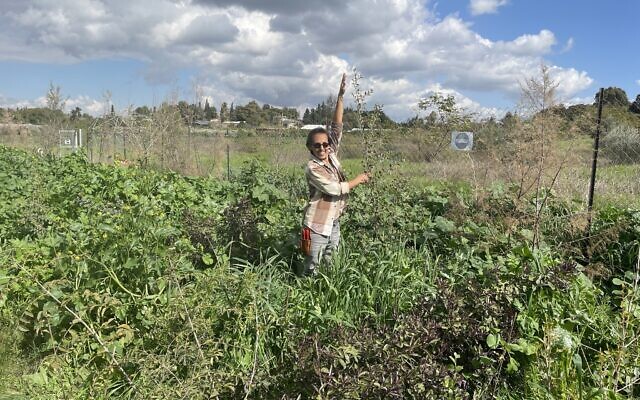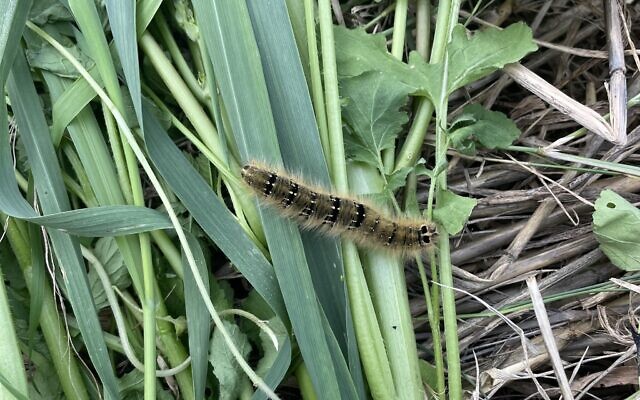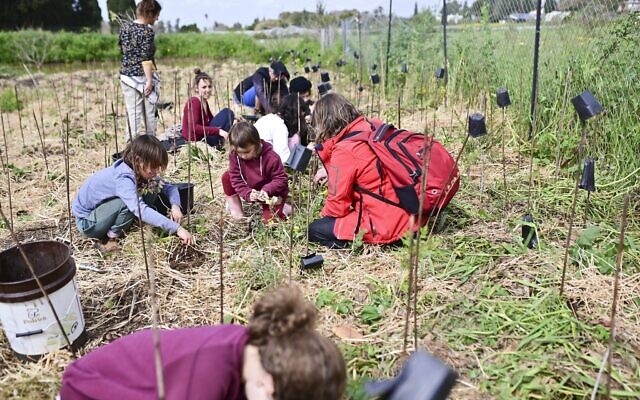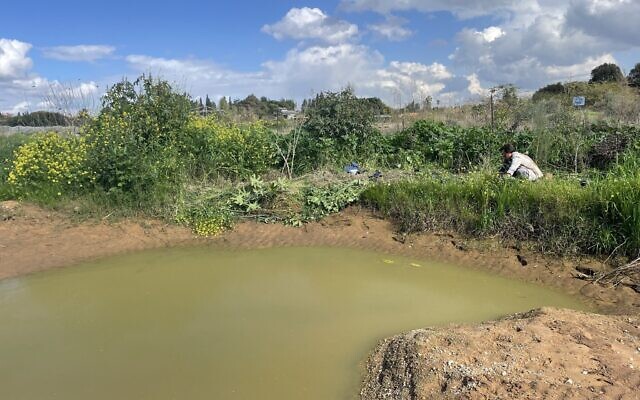In crowded Japanese-style forest, Israeli trees find space to grow
Miyawaki method mimics nature to reforest degraded land, in what proponents claim speeds process up tenfold
If you like the idea of forest-bathing in a mini-urban forest that can sprout in a couple of decades, then Miyawaki — now being introduced into Israel — may be your thing.
The method takes its name from the late Akira Miyawaki, a Japanese botanist who studied how specific plants form communities and how natural, native forests develop.
Spurred by the need to restore native forests, help remove some of the atmospheric carbon driving climate change and protect eroded coastal areas of Japan from tsunamis, he developed a set of instructions for growing forest ecosystems within 20 to 30 years, which he found was up to 10 times faster than the growth of forests left to develop naturally.
Some of the principles are counterintuitive to conventional gardeners, most of whom have been taught, for example, to plant trees at a distance from one another.
The Miyawaki method — being implemented all over the world, including in neighboring Jordan — involves planting them very closely together, three to four per square meter (11 square feet). The inspiration is the way that trees in nature release thousands of seeds, only a few of which will beat the odds of weather events and hungry herbivores to germinate and develop.
California-born ecological entrepreneur LyOr Rabinowiz, 39, who co-founded Miyawaki IL and is pioneering the method on a 100 square meter (1,100 square foot) plot near Gedera in south-central Israel, has been measuring the height and circumference of 400 tree saplings planted last March, some of which are already well over two meters (6.5 feet) tall.

“I was surprised by the growth rate we’ve seen,” he said.
A tamarisk sapling that stood 40 centimeters (16 inches) high when planted was more than 2.5 meters (eight-plus feet) tall at six months and is now even bigger.
Jujubes, the same size at planting, are also more than two meters high, and Syrian ash specimens exceed a meter (three feet).
Some slower-growing oaks, which were around eight centimeters (three inches) tall when planted, have easily quadrupled in size.
Rabinowiz said, “In my subjective experience, there are a lot more insects, spiders, bees, birds, and small mammals than when we started. There’s a lot more activity, which is amazing.”

To mark the Jewish tree planting festival of Tu Bishvat on February 6, an event will be held on February 11 (postponed from the weekend before Tu Bishvat due to predicted rain) to add a further 150 sapling to the 400 planted last March. The stakes are already in the ground to give the green newcomers initial support. (Details are on the group’s Facebook page).
Rabinowiz, leading a group of volunteers together with his project partner Dor Oppenheim, plans to reforest additional areas around the winter pond, but nurses the vision of bringing Miyawaki into the broader urban environment.

“You can create a mini-Miyawaki forest in a space equivalent to just a couple of parking lots, on an abandoned or unused space, along the sides of highways, or in part of an existing park,” he said.
“At the beginning, it’s really intensive. It requires earthworks, materials, and plenty of manual labor. But it looks after itself after three years. Compare that to the landscaped parks run by local councils, where the bills for water, pesticides, and fertilizers go on forever.”
The co-founder of a soil testing company, ReGen, Rabinowiz explained that the key first stage in any kind of planting is restoring life to the soil. “Look after the soil, and the soil will look after everything else,” he said.
The pilot Miyawaki project — which currently looks more like a mainly knee-high blotch of green — is located on a plot at Shdemama (Hebrew link), an ecological community site at Moshav Shdema.

Rabinowiz wants to attract students interested in researching the Miyawaki method and to reach out to kibbutzim, moshavim, and local councils to implement and test it.
Yuval Sapir, director of the Tel Aviv Botanical Garden, said that the growth rates recorded so far were similar to those in “benign conditions” that did not use Miyawaki, and were therefore unremarkable.
“I’m curious to see what’s ahead and research it more,” Rabinowiz responded. “It’s just the first year.”
No comments:
Post a Comment
Stick to the subject, NO religion, or Party politics